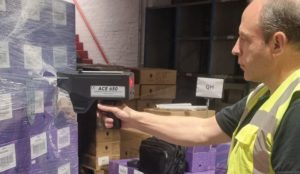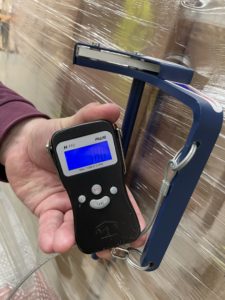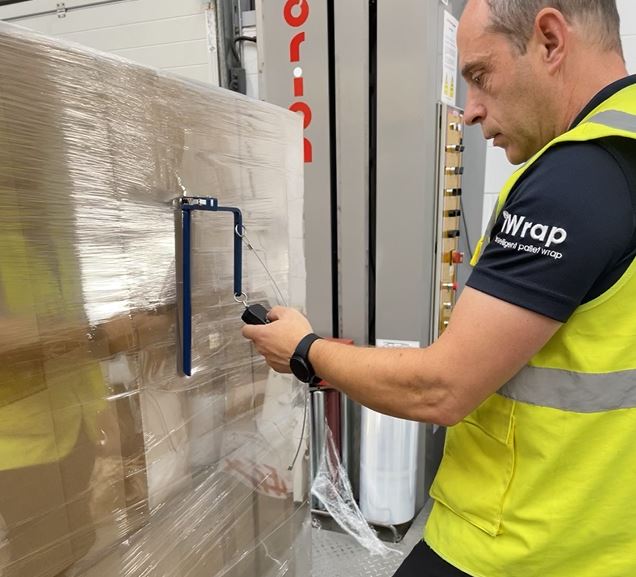Eliminate failed pallet load deliveries
Achieving excellent pallet load stability is the difference between successful deliveries being received by your customers, your partners or within your closed loop network – or having your goods damaged and refused. It’s as simple as that. But that’s where “simple” stops. Being able to achieve this reliably, regardless of the products being shipped or the rigours of your supply chain and transportation – is all about having the right tools to optimise this process time after time.
At the heart of this challenge is your pallet wrap or stretch wrap – the unsung hero in your warehouse. This product provides the means to deliver your products in 100% perfect condition, 100% of the time.
When pallet load stability goes wrong
Your team have invested time and money into your latest customer delivery, stock transfer or storage activities. But what’s at stake when it all goes horribly wrong? Damaged goods? Lost sales? Increased carbon footprint? Unhappy customers?
Unstable pallet loads can lead to:
- Product damage and breakage
- Increased risk of falling and shifting pallets
- Inefficient use of warehouse and transport space
- Customer dissatisfaction
- Damaged reputation
And what’s is the impact of all this on your business?
It all adds up to unnecessary costs!
No operation is immune from this challenge. And it can go much further than this with consequences for safety at every touchpoint throughout the despatch and delivery process.
Understanding pallet load stability testing

As we’ve seen, pallet stability is the key to reducing your company’s exposure and vulnerability to increasing costs as well as more serious issues with warehouse and road safety. Putting your pallet loads through rigorous testing can reveal how your pallets are able to resist damage.
- Companies can use various testing methods to validate their palletising processes before putting them into the actual distribution cycle.
- Tests can be used to simulate transport conditions to evaluate how a loaded test pallet will react to sudden vehicle braking and sharp cornering for example.
- There are two benchmark testing methods directly related to load stability and road safety which are Eumos 40509 and EN 12195.
- Best Practice experts can run like for like testing, comparing containment forces with different pallet wrap products. This provides unique insight into pallet wrap performance.
What to look for in pallet load stability testing

When examining and performing analysis on pallet wrap performance with a tool such as an Electronic hold force measuring device, you are looking for consistency of force across the top, middle and bottom of the pallet. The numbers at these three points represent the kg containment force the pallet wrap is applying around the pallet.
Measurements can be taken from either the longer or shorter side of the pallet but Best Practice methodology supports testing on the longer side of the pallet where the stretch film is at its weakest. Testing here provides a better understanding on how the wrap is performing. At this point of most vulnerability, testing a range of selected films will reveal in numbers the best performing pallet wraps using the least amount of plastic at the maximum stretch. A example of stable stretch capabilities we recommend typically work up to 300-350%, even as much as 400%, and high performance machine films are available as thin as 9mu. This potent combination of low micron-high stable extreme stretch is typical with high performance film such as iWrap.
How to obtain pallet load stability with your wrap
Every pallet will have a degree of movement when being transported, resulting in unstable pallets. The job of the pallet wrap or stretch film is to minimise this movement to the absolute minimum. This is achieved through a combination of product and machinery. Achieving a 300% stable stretch, for example, means when it is applied to the pallet there is virtually no ‘give’ left in the film. This locks down the load creating a formidable defence against movement and shifting. Pallet stability has been reached.
Containment force guide
It goes without saying, the heavier the load, the more containment force is needed to steady the pallet. However, too much force can also lead to damage to products. This table below sets out a guideline to accepted industry standards for achieving and being able to improve pallet stability.
Load Load Example Load Weight Force
Very Light Toilet rolls/Sponges <225kgs 0.9 to 2.7kgs
Mid Weight Stable loads Boxes/Filters 225 to 500kgs 2.7 to 3.6kgs
Heavy Unstable loads Post it Notes 500 to 770kgs 3.6 to 7.7kgs
Very Heavy Bottled beverages 770 to 1,000kgs 6.8 to 10kgs
Choosing the right pallet wrap for your products
We’ve seen that a host of factors come into play when you’re looking to ensure pallet stability for your consignments throughout their transit. The weight of the products being shipped hugely determines the packaging, wrap and compressive strength required, whether they are uniformly stacked, and the rigours the pallet needs to go through from the warehouse to its final destination.
High performance stretch film make it possible for your operation to use the least amount of plastic whilst maintaining pallet stability, helping you to eliminate all the financial losses associated with damaged and refused pallets.
Lightning the load
When it comes to wrapping your pallets, there are some simple tips to help lock in rigidity, safeguarding safety in the warehouse as well as for other road users during transport.
The pallet wrapping process
- Feed the wrap through the machine and attach the pallet wrap to the pallet itself by tying the end onto it
- Start to run your pallet wrap machine using your desired settings (a Best Practice Expert can set these programmes up for you, just for your products), ensuring maximum stretch is being achieved from your high performance pallet wrap
- Wrap the stretch film at least 3 times around the base of the pallet, ensuring the layers overlap, then begin working up the pallet
- Travel up to the top of the pallet and wrap three times here ensuring to overlap again, before traveling back down the pallet, overlapping all the way
- Once returned to the start-the pallet is wrapped
Getting to grips with pallet stability testing
By implementing a robust pallet stability testing program, you can very quickly identify potential weaknesses in your packaging strategies, optimise your wrapping techniques, and ultimately reduce the risk of product damage and associated costs. It’s always good to keep front of mind that consistent testing and continuous improvement are key to maintaining high standards of pallet stability and safety across your supply chain.
Want to know more or need help with your own load stability testing? Simply email us at [email protected] for further information, help and support.
